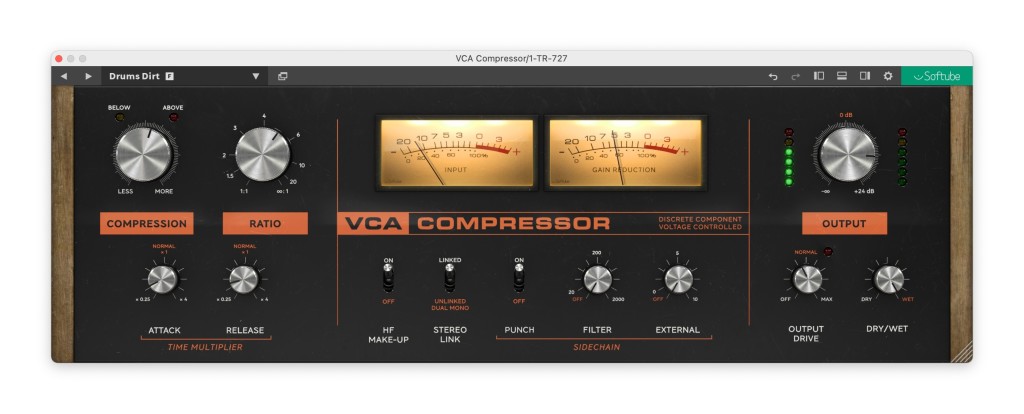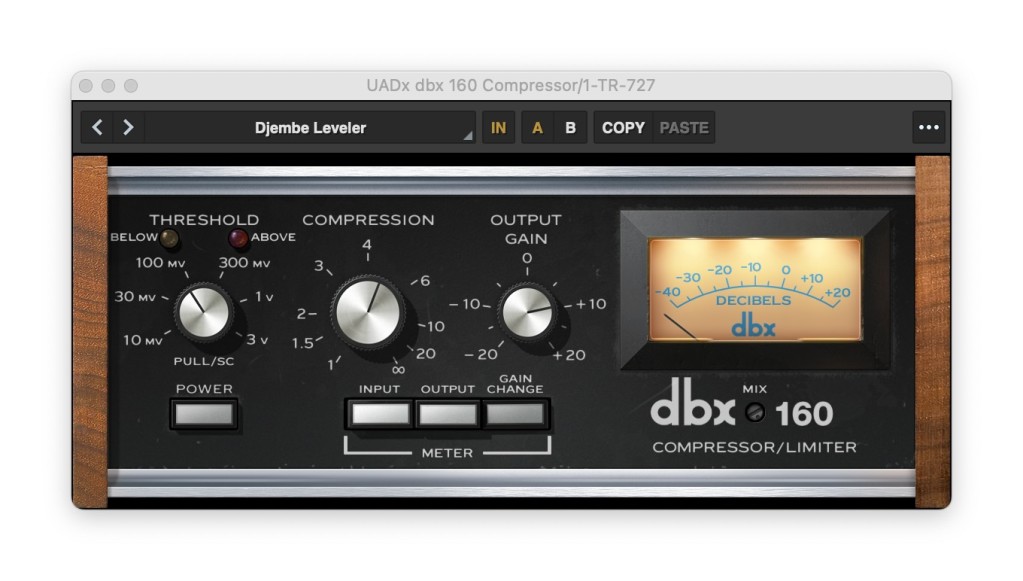We are awash in vintage compressor plug-ins, but Softube’s VCA Compressor is worth an extra look – and not just because it’s free.
So, okay, even for free, do you really need another compressor?
Softube’s VCA Compressor models the 1970s dbx (minus the brand name, since dbx still makes gear). I’m actually not sure if this is intended to be the better-known dbx 160 (1976) or something like a 1978 dbx 162. The two VU meters and some other details make it look more like a 162, but maybe that’s really just for looks.
Anyway, the important thing to know is, the dbx is a grabby, “hard-knee” compressor. This isn’t about transparency so much as changing character of sound. Part of the luxury of producing on computers today is the ability to freely apply those characteristics to source material that may be very unlike anything heard in past decades.
I really recommend reading this article from Mix from 2020; it’s a great look back, and really helps in understanding the underlying technology:
Birth of a Classic: The dbx 160 Compressor
Softube’s recreation has the same features as the original – RMS level detection, feed-forward gain reduction, and the vintage circuit behavior as the original. What you get is more control and precision:

- Drive (making this nice for dirtying up tracks)
- Sidechain section (with punch switch, filter/external level)
- Dry/wet (which opens up parallel compression)
- Stereo link and mono switch
- High-frequency make-up
It’s just a lot more flexible to actually control than an “authentic” dbx recreation. Case in point – Universal Audio’s own Spark subscription has a dbx 160 in it, complete with branding. And it’s very, very accurate – but you’ll probably wind up using it less, just because of having fewer controls. It becomes more of a once-in-a-while spice. The VCA Compressor you may find yourself using regularly; it’s great having a grabby compressor that also has wet-dry. The high-frequency make-up alone suddenly opens it up to more textural use.
Here, for comparison, is the UA model – and don’t get me wrong, it’s great to have. I’ll keep both installed; they’re different enough.

Here’s a quick example of processing both on a TR-727 from Roland Cloud, since you’ll really hear as I adjust controls what’s happening on the compressor with the behavior of those transients.
Another bonus – while UA and Arturia each have great models of their own, Softube’s presets tend to be a lot more reserved in my experience. (It’s great having Bob Katz’s mastering presets – but more on that another time.)
We’re really lucky, honestly, to have this many models. You’ve got decent VCA models in your host, probably (see Logic Pro), you might have a UA Spark subscription, you might have picked up something like this, and then you still have some decent choices to invest in. And they’re all a whole lot better than they were just a few years ago, both because of improved computational resources on bog-standard computers, but also because the craft of modeling nonlinearities has improved.
VCA Compressor, for me, is a keeper. And even those fake VU meters do a good job of animating what’s happening with the signal.
Notes:
You’ll need to choose “free” on Softube’s site. Then installation is via a separate Softube Central app. Softube uses iLok authorization, but honestly I’ve had no issues with it.
If you do feel like spending, there’s a whole library of these compressors from Softube, along with other goodies. I also rather covet that Studio 1 controller, though I’m doing okay with my beloved Logitech mouse.
Softube has a big sale on now. That Weiss series to me is one of the best software tools around, full stop – writing it up separately.
If you buy something from a CDM link, we may earn a commission.
Softube at Plugin Boutique [software sale]
Softube Console 1 Channel MkIII Control Surface [Sweetwater]
Softube Console 1 MKII Control Surface [Sweetwater]
Used Console 1 at Guitar Center